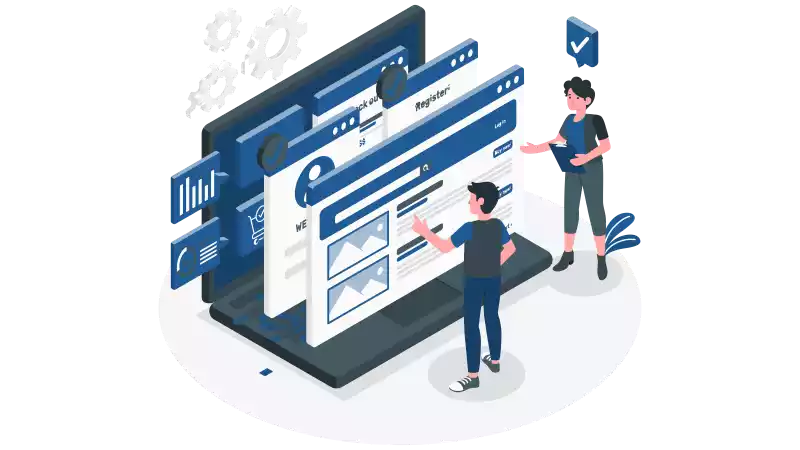27 October 2025

Have you ever wondered how to pick which life insurance company will serve your interests best, whether as a policyholder or as an agent? In India’s large and open life insurance market, there are plenty of options. Today, 26 life insurance companies operate in India. You might ask: Which one should I go with and why? That’s exactly what this article will help you answer.
And if you’re thinking of joining a life insurance company as an agent — you’ll want to know: Which company is best to partner with — and why?Let’s explore.
IRDA: The Regulator Behind Every Insurance Company
Before you choose any life insurance company, it is essential to know about IRDA, the Insurance Regulatory and Development Authority of India.
To understand its importance, think of the Reserve Bank of India (RBI). RBI manages and regulates banks and financial institutions to ensure stability. Similarly, IRDA was established in 1999 under the IRDA Act passed by the Indian Parliament to oversee and regulate the insurance industry in India.
In simple terms, IRDA protects the interests of policyholders and ensures that every insurance company in India operates with transparency, fairness, and financial stability.
What Does IRDA Do
IRDA plays multiple roles. It not only regulates the insurance business but also ensures that no company can deceive or mislead customers.
Every life insurance company in India must be registered and certified by IRDA before starting operations. Even after registration, a company cannot launch any new plan without prior approval from IRDA. The regulator studies the product features carefully and allows it only if it benefits customers.
In short, IRDA’s primary mission is twofold:
- To promote life insurance as a tool of financial protection for every Indian family.
- To protect policyholders from fraud, unfair practices, and financial loss.
Ensuring Transparency in the Insurance Sector
To bring complete transparency in the insurance business, IRDA monitors three major sectors:
- Life Insurance
- General Insurance
- Health Insurance
At the end of every financial year, IRDA publishes detailed data on its official website. These reports include each company’s new business performance, renewal premiums, claim settlement ratios, and financial strength.
This transparency helps every Indian citizen make an informed decision before choosing a company or policy.
The insights and analysis presented in this article are based on IRDA’s Annual Report, published on 23rd December 2024.
How to Select the Best Life Insurance Company
If you are planning to buy a new policy or start your career as an insurance agent, your decision should be guided by facts and fundamentals, not advertisements or opinions.
Here are the most important factors to consider:
Financial Strength:
The financial health of a company is the backbone of its reliability. A company with strong assets and a solid life fund is less likely to face bankruptcy or liquidity issues. Always check the company’s asset value and solvency ratio.
New Business Growth:
A company that consistently performs well in acquiring new business indicates public trust and long-term potential. Steady growth reflects confidence from both policyholders and agents.
Claim Settlement Ratio (CSR):
A high CSR means the company honors its commitments. Examine how it handles different types of claims — death, maturity, surrender, or survival benefits. A ratio above 95% is considered excellent.
Customer Service:
How quickly does the company respond to policy-related queries or complaints? Efficient customer service adds immense value, especially during stressful times like claim settlement.
Product Variety:
A good insurer provides a wide range of policies — term, endowment, pension, ULIP, and child plans — designed to meet different life stages and financial goals.
Training and Support for Agents:
For those planning to become insurance agents, choose a company that offers strong training programs, marketing support, and a transparent commission structure.
List of Life Insurance Companies in India
According to IRDA’s official website, the following 26 life insurance companies are currently operating in India:
- Acko Life Insurance Ltd.
- Aditya Birla Sun Life Insurance Co. Ltd.
- Ageas Federal Life Insurance Co. Ltd.
- Aviva Life Insurance Co. India Ltd.
- Axis Max Life Insurance Ltd.
- Bajaj Allianz Life Insurance Co. Ltd.
- Bandhan Life Insurance Ltd.
- Bharti AXA Life Insurance Co. Ltd.
- Canara HSBC Life Insurance Co. Ltd.
- CreditAccess Life Insurance Ltd.
- Edelweiss Life Insurance Co. Ltd.
- Future Generali India Life Insurance Co. Ltd.
- Go Digit Life Insurance Ltd.
- HDFC Life Insurance Co. Ltd.
- ICICI Prudential Life Insurance Co. Ltd.
- IndiaFirst Life Insurance Co. Ltd.
- Kotak Mahindra Life Insurance Co. Ltd.
- Life Insurance Corporation of India (LIC)
- PNB MetLife India Insurance Co. Ltd.
- Pramerica Life Insurance Co. Ltd.
- Reliance Nippon Life Insurance Co. Ltd.
- Sahara India Life Insurance Co. Ltd.
- SBI Life Insurance Co. Ltd.
- Shriram Life Insurance Co. Ltd.
- Star Union Dai-ichi Life Insurance Co. Ltd.
- Tata AIA Life Insurance Co. Ltd.
Download IRDA Annual Report
If you wish to verify and compare the performance of all life insurance companies in India, the official IRDA Annual Report is the most authentic source.
For your convenience, Jeevan Bima Bazaar is sharing the PDF version of IRDA’s Annual Report 2023–24. You can easily download it using the link below.
Why LIC of India Remains the Most Trusted Choice
If you download and study IRDA’s latest report, you’ll notice one consistent performer — Life Insurance Corporation of India (LIC).
LIC stands out for several reasons:
-
Government Ownership and Experience:
Established in 1956, LIC has been serving the nation for nearly seven decades. Its deep understanding of the Indian market makes it a benchmark for trust and reliability.
-
Financial Strength:
LIC’s asset value exceeds ₹38 lakh crore, and its life fund is over ₹34 lakh crore. This scale ensures unmatched financial security compared to private insurers.
-
Claim Settlement Leadership:
LIC consistently tops in the number and total value of claims paid. Its efficient claim settlement system gives families peace of mind when it matters most.
-
Products Designed for India:
LIC designs its policies keeping Indian social and economic realities in mind — from rural savings plans to urban protection products.
Whether you wish to buy a new life insurance policy or begin a career as an insurance agent, LIC remains one of the safest and most dependable options in India.
Watch the Video: How to Choose the Best Life Insurance Company in India
If you’re still wondering which life insurance company is right for you, don’t miss the video below.
It explains how a well-informed decision today can secure your family’s tomorrow.
Conclusion
India’s life insurance market offers many choices, but choosing wisely requires clarity. A good decision depends on understanding a company’s financial strength, claim performance, service quality, and reputation.
A carefully chosen insurance company not only protects your family’s future but also gives you something even more valuable — peace of mind.
When it comes to trust, transparency, and long-term security, the right insurer becomes your partner for life.
25 October 2025
Have you ever signed up for a life or health insurance policy and then thought: “Wait — this isn’t what I really needed”? You’re not alone. At times, a policy is bought under pressure, mis-selling, or simply without fully reading the fine print. What if you could rewind that decision, at least in part? That’s where the concept of a “Free Look Period” comes in — a built-in safety valve offered by insurers for customers like you and me.
In India, this provision gives policy-holders a short window (typically 15 to 30 days) to review the policy once they have the documents in hand and if they find it unsatisfactory — return it for a refund (with certain deductions). The idea is simple yet powerful: you get to say “maybe this wasn’t for me” and get out, rather than being locked into the wrong policy for years.
In this article I will walk you through the Free Look Period – what it is, why it matters, how it works and how you can use it effectively if you realise you’ve been mis-sold a policy. By the end, you’ll know exactly what to do — so you aren’t stuck saying “I wish I had checked that earlier”.
What is the Free Look Period?
Question to ponder: What if you bought a policy and then later discovered the benefits didn’t match what you were told?
The Free Look Period is the time right after you receive your policy document during which you can return the policy and get the premium refunded (minus some deductions). For life insurance policies in India, regulators specify that this period must be at least 15 days. If the policy was bought electronically or via distance marketing, many insurers extend it to 30 days.
For example, as per Insurance Regulatory and Development Authority of India (IRDAI) guidelines: “Free Look Period is available for all Life Insurance policies … the insured will be allowed a period of at least 15 days (30 days in case of electronic policies and policies sourced through distance mode) from the date of receipt of the policy to review the terms and conditions of the policy and to return the same if not acceptable.”
In simple terms: you get a grace period to say, “Hold on, let me check if this policy really aligns with what I thought I was buying” — and if not, you can cancel.
Why is it important?
Question to ponder: Why would regulators insist on this “cool-off” window for something as serious as insurance?
Because insurance policies are legally binding contracts that often last decades, include complex clauses, exclusions, premium commitments, and many of us may not fully understand all the print at the time of purchase. The Free Look Period protects you from being locked into a policy that doesn’t match what you were sold — whether due to mis-selling, misunderstanding, or simply impulse.
It gives you the chance to:
- Read the policy document carefully.
- Compare the features promised verbally with what is actually written.
- Decide whether the premium is justified versus the benefits.
- Cancel the policy while the “mistake” is still fresh and avoid being stuck with unsuitable coverage.
In short: it’s your safety net — a built-in right to protect yourself as a consumer.
Who gets the Free Look Period and for which policies?
Question to ponder: What is the exact time limit you have to act — and does it vary?
Yes, the time window varies depending on how you received the policy document and how the policy was issued (offline vs online). Key points:
- Offline Policies (agent-delivered, physical papers): at least 15 days from receipt.
- Electronic Policies or Distance Mode (online purchase, email, etc): often up to 30 days.
- Some news suggest that regulators are considering extending the Free Look period further (even up to one year) as a consumer-protection measure.
Thus, when you receive your policy document, mark the date, then calculate the last day of the Free Look window and act if you’re not comfortable.
How does cancellation and refund work?
Question to ponder: If you decide to cancel within the Free Look window, what will you actually get back — full premium? Some deductions?
You’ll get most of your money back — but not everything, because the insurer may have incurred certain costs already. Typical deductions include: stamp duty, cost of medical examination (if any), and a proportionate premium for the coverage that may have started.
For example:
- If you receive your policy document and find the exclusions too restrictive, you send a written request (or fill the cancellation form) to the insurer within the Free Look Period.
- The insurer verifies that you didn’t make any claims, the policy term qualifies, you are within the window.
- They refund the premium you paid minus: (a) stamp duty, (b) cost of medical tests, (c) a small proportion of risk premium if coverage was in force.
Important tip: The sooner you act within the window, the less risk you carry and the better your refund outcome.
How Free Look helps
Imagine: You’re told by an agent that the plan will give you a certain bonus, or cover certain illnesses, but when you receive the policy document you notice that those illnesses are excluded or that the premium increases sharply after 5 years. Or, you realise you bought a savings-cum-insurance product when what you really needed was pure term cover.
In such a case:
- You use the Free Look window to say: “This isn’t what I thought I was buying.”
- You cancel the policy and go look for one that fits you better.
- You avoid being locked into a mismatched policy for the long term (which might cause claim-rejection or inadequate cover later).
Mistakes to Avoid and Practical Tips
Question to ponder: What common mistakes do people make — and how can you avoid them?
Here are some practical pointers:
- Don’t assume Free Look applies indefinitely — check the exact window and act within it.
- Don’t ignore the policy document when you receive it — reading it early is key.
- Keep proof of when you received the policy document (email timestamp, courier slip, etc) — because the Free Look period starts from the date of “receipt”.
- If the plan was sold online or via distance marketing, know that the window may be 30 days, not just 15.
- Remember: you will not necessarily get 100% of the premium back — some deduction is normal.
- If you wait past the Free Look period and decide you don’t want the policy anymore, you’ll lose this automatic right, and surrender charges or other penalties may apply.
- Ask your insurer or agent: “What is the clause in my policy for Free Look? What is the last date to cancel?” Get this in writing or email.
Key data at a glance
- Free Look Period for life insurance in India: typically 15 days (offline) and up to 30 days (online/distance) from receipt of policy.
- For health insurance: a minimum of 15 days, and often 30 days for policies issued April 2024 onwards.
- If you act within the Free Look window and cancel, you will get refund of premium paid less expenses like stamp duty, medical tests, proportionate risk premium.
Conclusion
If you’ve purchased a life or health insurance policy and then realised that it may not be the right fit (due to mis-selling, misunderstandings or simply changed mind), you have a powerful tool in your hands: the Free Look Period. This is your window to pause, review, and (if needed) unwind the contract with minimal cost — rather than being stuck years into an unsuitable policy.
Think of the Free Look period as a “reset button” for what should be a confident journey into financial protection. It doesn’t mean you made a bad decision — it simply means you’re choosing clarity and alignment. You deserve a policy that matches your needs, your goals, and your peace of mind — not something you feel trapped into. Use the Free Look period wisely, read those documents, ask those questions, act if you must — and then move on with confidence.
23 October 2025
The Insurance Regulatory and Development Authority of India (IRDAI) has recently issued stringent guidelines for insurers, reinsurers, and distribution channels to manage and mitigate risks related to insurance fraud. The regulatory body has emphasized a zero-tolerance approach to fraud, highlighting the need for robust fraud risk management frameworks within the insurance sector.
These new regulations will come into effect from 1st April 2026 and are mandatory for all insurance companies operating in India. IRDAI has directed insurers to establish a board-approved anti-fraud policy, which should include clear procedures for fraud detection, prevention, reporting, and remediation.
Need for a Fraud Risk Management Framework
IRDAI has instructed insurers to implement a comprehensive Fraud Risk Management Framework. The purpose of this framework is not only to detect fraudulent activities but also to minimize overall fraud risk and strengthen internal monitoring mechanisms. Insurers are required to set up red flag indicators that can alert them to potential fraudulent activities at an early stage.
This framework will also enable insurance companies to continuously monitor fraud incidents and take timely corrective actions. By adopting these measures, insurers can enhance transparency and trust within the industry.
Fraud Monitoring Committee and Unit (FMC & FMU)
To ensure effective fraud management, IRDAI has mandated that all insurance companies establish a Fraud Monitoring Committee (FMC) and a Fraud Monitoring Unit (FMU).
- FMC (Fraud Monitoring Committee): Responsible for implementing the fraud risk management framework and ensuring compliance with its guidelines.
- FMU (Fraud Monitoring Unit): Operates independently of the FMC and conducts detailed analysis of fraud incidents, prepares reports, and assists in executing the corrective measures recommended by the FMC.
This structure ensures impartial and effective oversight of all fraud-related activities.
Emphasis on Cybersecurity and Online Fraud Prevention
IRDAI has also emphasized that insurers must develop robust cybersecurity measures to protect against new forms of online fraud and digital threats.
Key cybersecurity requirements include:
- Maintaining comprehensive records of fraud incidents
- Verifying the identity of policyholders and beneficiaries
- Controlling access to critical systems
- Regularly updating security protocols and IT infrastructure
A strong cybersecurity framework is essential for protecting insurers and their customers from digital fraud risks.
Data Sharing and Role of IIB
Insurers are required to make effective use of available data and participate in the Insurance Information Bureau (IIB)’s fraud monitoring framework. The IIB will maintain a Caution Repository, a centralized database of potential fraudsters, which will help prevent their involvement in insurance transactions.
Insurers must share data related to distribution channels, hospitals, third-party vendors, and blacklisted fraudsters with the IIB. This collective data-sharing approach is expected to strengthen industry-wide transparency and accountability, ensuring the protection of policyholders and other stakeholders.
Conclusion
IRDAI’s new directives signal a clear message: insurance fraud will not be tolerated in any form. Insurance companies are required to implement a robust fraud risk management framework, establish FMC and FMU, and strengthen cybersecurity protocols.
By collaborating with the IIB and utilizing data effectively, insurers can prevent fraud, maintain trust, and safeguard the integrity of the insurance sector. Compliance with these guidelines will not only protect policyholders but also contribute to a secure, transparent, and resilient insurance ecosystem in India.
17 October 2025
Are you an LIC agent looking to grow your insurance business?
In today’s competitive world, selling policies alone is no longer enough. To stand out and expand, LIC agents must use smart tools and modern strategies. One such powerful tool is the LIC Survey Form- a simple yet effective way to understand customer needs, build trust, and strengthen long-term relationships.
By using this form, you can not only stay connected with existing clients but also reach new prospects with confidence. It acts as a professional bridge between you and your customers, helping you position yourself as a trusted advisor rather than just a policy seller.
In this article, we’ll focus on the fifth question of the LIC Survey Form: “Are all your LIC policies linked to the NEFT system?” Though it sounds basic, this question holds hidden opportunities that can accelerate your business growth. Let’s explore how it can transform your approach to insurance marketing.
Purpose of the Question
The main purpose of this question is to ensure that every customer’s payment process is secure, transparent, and hassle-free. Through NEFT (National Electronic Funds Transfer), LIC directly credits policy payments to the customer’s bank account, ensuring safety and efficiency.
However, the reality is that many policyholders still haven’t linked their policies to NEFT and this is where a great opportunity lies for every LIC agent. When you ask this question during your survey, you’re not just collecting information — you’re educating your customers about an important benefit and showing them that you truly care about their convenience and financial safety.
In short, for an LIC agent, the true purpose of this survey question is much more than just compliance. It’s about building trust, awareness, and stronger relationships — making your customers feel that you are genuinely concerned about their well-being and committed to serving them better.
The Fifth Question of the Survey Form: Key to Building Strong Customer Relationships
In the insurance business, success comes not just from selling more policies but from earning the trust of the people you serve. When your clients believe that your goal is not merely to sell insurance and make money, but to genuinely act as their financial advisor who cares about their interests — your success becomes natural and effortless.
When you ask customers during the survey, “Are all your policies linked to NEFT?”, you are doing much more than asking a routine question. You are subtly sending a powerful message-
- that you care about the safety and timely credit of their hard-earned money,
- that you are helping them stay updated with LIC’s latest technologies and processes, and
- that unlike many agents who only focus on selling, you prioritize your customer’s benefit and financial well-being.
In this way, this simple question becomes a bridge to build trust, credibility, and long-term relationships. Over time, these relationships can naturally open doors for cross-selling and referral opportunities, helping you grow your LIC business with stronger foundations and genuine connections.
LIC Survey Form- The Fifth Question: Benefits of Linking Policies with NEFT
At first glance, the fifth question in the LIC Survey Form - “Are all your policies linked to NEFT?” - may appear simple and routine. You might even feel that it has little to do with your business growth. But when you look deeper, you’ll realize that this question can open up new possibilities for you as an LIC agent.
During your survey interactions, this question can become the starting point of an impactful conversation. It allows you to educate your customers about the benefits of linking their LIC policies with NEFT. You can highlight the following key points during your discussion:
- Direct Payment: When policies are linked with NEFT, LIC directly transfers claim or maturity payments into the customer’s bank account. There’s no need to wait for cheques or drafts.
- Faster & Safer Transactions: For unlinked policies, LIC must issue cheques or drafts and send them via post- which can cause delays or delivery issues. NEFT eliminates this risk, ensuring timely and secure payments.
- Transparency: Payments made through NEFT appear directly in the customer’s bank statement, providing a clear and reliable transaction record.
- Convenience: Without NEFT linkage, customers often face inconvenience- following up with their agent or bank to confirm payments. With NEFT, everything happens automatically and smoothly.
- Trust & Reliability: As India’s largest life insurer, LIC builds greater confidence when customers see their funds credited safely and promptly through NEFT.
By explaining these benefits during your survey, you not only create awareness but also position yourself as a knowledgeable, trustworthy, and customer-focused LIC agent. You demonstrate that your goal is not merely to sell policies but to help people experience a better, safer, and more transparent insurance journey.
In the long run, this approach strengthens your reputation, deepens customer trust, and helps you build a sustainable, referral-driven LIC business.
Practical Tips for Discussing the Fifth Question of the Survey Form
From my personal experience, I can confidently say that when you ask this question during your survey, “Are all your policies linked to NEFT?” - you’ll receive a variety of responses from different people.
Some will answer confidently, while others may hesitate or give vague answers. Among them, there will be many who don’t even know what the NEFT system actually is - yet they won’t admit it openly.
A truly successful LIC agent understands this subtle reality. Your role is not just to ask questions, but to communicate in a way that makes your customers feel respected, understood, and comfortable, even when they lack technical knowledge. The key is to explain things clearly without making them feel ignorant or inferior.
To do this, you can use real-life or relatable stories to simplify your message. For example, you might say:
“One of my clients, Mr. Sudhir Kumar, purchased an LIC policy in 2019 that offered payouts every five years. However, his policy wasn’t linked with NEFT.
In 2024, LIC issued a cheque for ₹1,20,000 as part of his policy benefits, but he never received it. During a survey in January 2025, when I checked his records, I found that LIC had already made the payment, but the cheque had been returned to the branch due to postal issues.
I immediately helped him link his policy with NEFT and within a day, the full amount was directly credited to his bank account. Now, whenever LIC makes his next payment, he won’t need to do anything - the money will be deposited automatically!”
When you share examples like this, customers not only understand how NEFT works, but also realize the real-world benefits of linking their policies. It builds their trust in you as an informed advisor and positions you as someone who genuinely looks out for their interests.
In short, storytelling is one of the most effective tools an LIC agent can use. It makes complex topics simple, conversations engaging and relationships stronger - all while helping you grow your insurance business with credibility and care.
The Fifth Question of the Survey Form: A Gateway to an Agent’s Success
You might wonder — why is the fifth question of the LIC Survey Form so important for you as an LIC agent?
In reality, this question can become a gateway to your long-term success when you use it strategically. By asking it, you achieve several key steps that directly help you grow your insurance business:
-
Updating Customer Data
When you ask customers whether their policies are linked to NEFT, their responses help you identify who has updated details and who hasn’t. Many customers are often unsure and may even ask you to check their NEFT status.
This gives you the chance to maintain proper records of such policies and policyholders — a valuable database that allows you to assist them in the future with their LIC policies or claims.
-
Providing Proactive Service
Once you have accurate customer data, you can offer value-added services like premium reminders, income tax certificates, and payment notifications. These small but impactful gestures strengthen your after-sales service, helping you stand out as a responsible and dependable LIC agent.
-
Building Communication Opportunities
Surveys are not just about collecting data — they’re about building relationships. Regular follow-ups and interactions after the survey give you repeated opportunities to reconnect with customers, their families, and potential referrals.
This consistent communication keeps your name fresh in their minds and creates future sales opportunities.
-
Unlocking Cross-Selling Opportunities
Every interaction opens the door to cross-selling. When customers see your dedication and trust you, they are more likely to consider new policies with LIC.
Moreover, when a customer receives a claim or maturity payment, it’s a perfect moment — they experience the real benefits of insurance and feel motivated to reinvest. If you approach them the right way at that moment, selling becomes effortless.
In essence, the fifth question of the LIC Survey Form is not just a survey query — it’s a business growth strategy. It helps you update records, strengthen service quality, build communication, and create sales opportunities.
By using it effectively, you position yourself as not just an LIC agent but a trusted insurance advisor who cares, connects and creates lasting value.
Conclusion
For every LIC agent, each question in the LIC Survey Form is not just a formality - it’s a new opportunity to connect with people. When used thoughtfully, these questions can help you build trust, enhance your professional image, and open doors to new business possibilities in your area.
Remember, success in the insurance business is not only about selling policies - it’s about building meaningful relationships and showing genuine care for your customers’ financial well-being. The survey form gives you a structured and effective way to do exactly that.
So, if you truly wish to grow your LIC business and achieve lasting success, I strongly encourage you to complete this entire survey form series and apply the insights shared here in your daily interactions.
I can say with full confidence - once you start using these techniques with sincerity and consistency, you’ll see a remarkable transformation in your business performance and reputation. The key to your success lies not in hard selling, but in smart connecting - and the LIC Survey Form is your perfect tool to make it happen.
09 October 2025
IRDA IC38 Mock Test
Enter your name and start the quiz
🎯 Well done! You’ve finished this quiz.
Name:
Total Questions:
Correct Answers: | Wrong Answer:
Percentage:
IRDA IC38 Mock Test
Enter your name and start the quiz
🎯 Well done! You’ve finished this quiz.
Name:
Total Questions:
Correct Answers: | Wrong Answer:
Percentage:
IRDA IC38 Mock Test
Enter your name and start the quiz
🎯 Well done! You’ve finished this quiz.
Name:
Total Questions:
Correct Answers: | Wrong Answer:
Percentage:
















